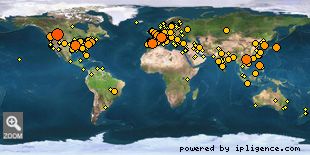 » NMR Jobs
» NMR Jobs |
|
|
|
|
|
|
 » Cool papers
» Cool papers |
|
|
|
|
|
|
 » NMR books
» NMR books |
|
|
|
|
|
|
 » NMR theses
» NMR theses |
|
|
|
|
|
|
 » NMR blogs
» NMR blogs |
|
|
|
|
|
|
 » NMR news
» NMR news |
|
|
|
|
|
|
 » NMR tweets
» NMR tweets |
|
|
|
|
|
|
 » NMR videos
» NMR videos |
|
|
|
|
|
|
 » NMR pictures
» NMR pictures |
|
|
|
|
|
|
 » Online Users: 186
» Online Users: 186 |
| 0 members and 186 guests |
| No Members online |
| Most users ever online was 1,278, 01-09-2024 at 07:38 AM. |
|
 » Welcome!
» Welcome! |
Welcome, NMR world!

Our visitors map.
|
|
 » BioNMR wiki
» BioNMR wiki |
|
|
|
|
|
|
 » NMR discussion
» NMR discussion |
|
|
|
|
|
|
 » NMR conferences
» NMR conferences |
|
|
|
|
|
|
 » NMR software
» NMR software |
|
|
|
|
|
|
 » Pulse sequences
» Pulse sequences |
|
|
|
|
|
|
 » NMR community
» NMR community |
|
|
|
|
|
|
 » NMR presentations
» NMR presentations |
|
|
 » NMR web resources
» NMR web resources |
|
|
|
|
|
|
 » NMR feature requests
» NMR feature requests |
|
|
 » NMR bookmarks
» NMR bookmarks |
|
|
|
|
|
|
 » Stats
» Stats |
Members: 3,202
Threads: 25,734
Posts: 26,120
Top Poster: nmrlearner (23,178)
|
| Welcome to our newest member, bpadmanabhan |
|



